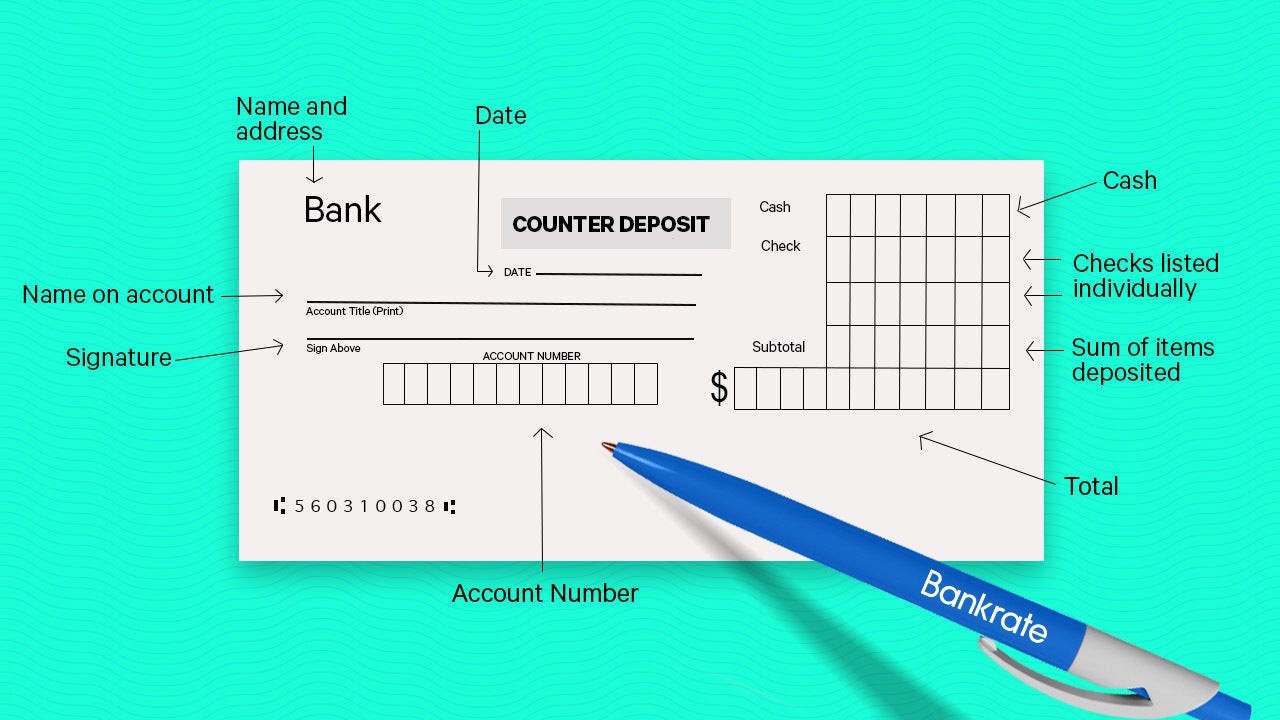How to deposit a check

The Bankrate promise
At Bankrate we strive to help you make smarter financial decisions. While we adhere to strict , this post may contain references to products from our partners. Here's an explanation for .
Online bill pay and peer-to-peer payment services have minimized the need for using checks as a form of payment, but occasionally you might still need to deposit a check.
Checks are a paper form of payment that can be deposited into a bank account in several ways, including through traditional and newer, digital methods. Here are five ways to deposit a check and the steps necessary for each.
At a bank
One traditional way to deposit a check is at a bank or credit union by:
- Endorsing the check: On the back of the check, there’s an area that says “endorse here” or something similar. At the bank or credit union, sign in this area to endorse the check.
- Filling out a deposit slip: The deposit slip shows the teller what you want to do with your check. You can get this at a bank branch, or there may be deposit slips in the back of your checkbook. On the slip, provide your name, account number and the cash amount of the deposit. If you’d like to receive any of the check amount in cash, note that too. If you’re receiving cash, make sure to sign the slip.
- Going to a teller: Present the check and deposit slip to the teller. The teller may ask for a driver’s license or other form of ID. Once the banker deposits the funds, you should receive a receipt.

Illustration by Bankrate
At an ATM
An alternative to going to the bank if you can’t make it during business hours is to deposit a check at an ATM. Not all ATMs allow customers to deposit checks, so check with the bank to see if its ATMs provide this service.
To deposit a check at an ATM:
- Gather the needed items: Have your debit card and the signed check prepared beforehand.
- Insert your debit card and enter the PIN.
- Select the deposit account: In most cases, the funds will be deposited into a checking or savings account for safekeeping until the money is needed.
- Enter the deposit amount: Unless it’s an ATM that automatically scans checks, type the exact dollar amount of the check.
- Insert the check into the ATM’s slot.
- Confirm the dollar amount: You’ll see a dollar amount on the screen and be asked to verify the number. Depending on the ATM, there may be a few more questions to answer before the deposit is confirmed.
- Take the receipt and your debit card.
With a smartphone
A convenient and fast method for depositing checks is through mobile check deposit, through your bank’s mobile app (if offered). Using this feature, it’s possible to deposit a check from the comfort of your home by:
- Opening the bank’s mobile app.
- Signing in with your credentials and finding the option for depositing checks.
- Endorsing the check: Sign the check as you would to deposit it at a bank. Additionally, make sure to either check the “For Mobile Deposit” box, or, if the check does not have this option, write “For Mobile Deposit Only” beneath the signature line.
- Taking a photo: Find good lighting, a flat surface and position the check in the camera’s frame. The app will likely show guidelines on the phone screen for positioning the check correctly. Once positioned, either you snap a picture or the app automatically does this. Repeat the process for both sides of the check.
- Providing some information: Enter the amount on the check in the app and confirm that the app has read the account and routing numbers correctly.
Online
Like mobile check deposits, online deposits can be made at any time without having to go to a branch. But unlike mobile deposits that only require a smartphone camera lens to capture the check’s image, online check deposits require a scanner.
The steps to deposit a check online are:
- Log in to the bank or credit union’s website and find the online deposit tab. A high speed internet connection works best.
- Endorse the check: Sign the check before scanning it. Your bank or credit union may also require you to write “For Online Deposit Only,” “For Mobile Deposit Only” or something similar, which will likely be stated on the check deposit page.
- Scan both sides of the check: Unlike mobile check deposit, you can’t take a picture of the check with a phone for online deposit; it must be scanned. But, if you have an iPhone, it’s possible to scan the check using the Notes app.
- Choose the deposit account and upload the scanned check images.
- Enter the check amount and submit.
U.S. Postal Service
Some banks and credit unions allow customers to deposit checks by sending the check through the mail by:
- Endorsing the check: Sign the check as you would with other deposit methods in the “endorse here” area. The bank may require the payee to write their account number and “For Deposit Only” or something similar below the signature as well.
- Fill out a deposit slip: You will need to send a deposit slip along with the check, which includes information such as the account number of the account to be deposited into, your name and the deposit amount.
- Address the check and deposit slip to the bank’s processing center: Make sure to address the envelope to an address provided by the bank for sending checks to, which can be found on the bank’s website or by calling a bank representative.
- Bring the envelope to a U.S. Postal Service office: Hand it to a postal worker rather than dropping it in the mailbox to ensure its safest transfer to the Postal Service. Send the envelope using certified or express mail, which requires someone to sign for the check when it’s delivered and provides confirmation that it was safely received by the bank.
Bottom line
Depositing a check is relatively similar no matter which method you choose. Always endorse the check, and you may need to write an extra note below the signature if the check isn’t being directly handed to a bank teller. The check may take a couple of days to clear before the funds become available.
Make sure the check is legitimate before endorsing and depositing it by confirming that the amount is correct and that it is issued by a legitimate bank. If you suspect a fake check, report it to the Federal Trade Commission.

